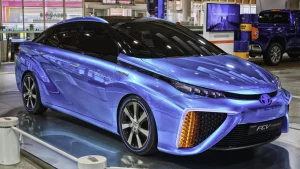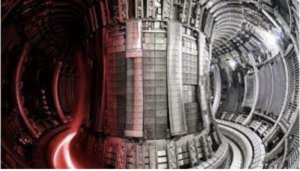The Future of Renewable Energy
Tidal energy is one of the oldest methods of obtaining sustainable power. It was initially used in Europe to operate grain mills over a thousand years ago. The process was simple: water from the tides would be stored in ponds similar to tide pools formed on the beach, and when the tide went out, the water would turn a wheel used to mill the grain (1). While it was convenient that such a product could be obtained without any manual labor, the grain could only be milled as the tide was going out. The dependency of renewable energy sources on certain environmental conditions to function is an issue that is still prevalent today. For example, solar panels, while incredibly useful, can only provide power during the day, and wind turbines can only provide energy while the wind blows. Tidal energy offers an effective solution to this problem.
In 1966, a tidal barrage, or a dam that generates energy from the tide, was built in La Rance, France. It was the largest tidal barrage in the world, with the capacity to generate up to two hundred and forty megawatts of electricity or enough to power 100,000 homes. This tidal barrage held its status until a slightly larger one was built in South Korea in 2011 (2). Recently, however, the tidal energy industry has adopted the usage of in-stream energy generation, where an array of turbines is placed inside of the tidal stream. Some of these even can float to the surface to make maintenance easier (3). This is an improvement due to its inherent scalability compared to the usage of tide pools or dams, both of which take up a large amount of space.
Tidal energy has many benefits. The primary benefit is that it is environmentally friendly. Tidal energy produces almost no waste or greenhouse gasses. It, furthermore, is more reliable than wind and solar. This is because the tide will always rise and fall while the appropriate conditions for wind and solar power aren’t always present. In addition, water is far denser than air. Therefore, the amount of energy generated through tidal methods far exceeds the energy generated through wind turbines.
The biggest issue with tidal energy is its cost. Creating arrays of tidal turbines and wiring them up to the power grids is both tedious and incredibly expensive (4). Since a location must be both near a body of water and near the power grid, not all locations are suitable for the generation of tidal energy. Use of more remote locations would require long and expensive underground or undersea cables to transmit the generated electricity.
Though tidal energy arrays do not have negative environmental effects in the same way that fossil fuels do, they can very easily unfavorably affect underwater life. This can take the form of turbine blades hitting fish or disrupting echolocation used by marine mammals (4).
Though there are obvious issues with tidal energy, none of them are impossible to fix. While the world continues to avoid implementing measures to reduce or reverse global warming, tidal energy offers a valuable and reliable alternative to fossil fuels.
BIbliography:
- Tidal Energy | PNNL. (n.d.). Www.pnnl.gov. https://www.pnnl.gov/explainer-articles/tidal-energy#:~:text=Tidal%20energy%20is%20a%20form
- Tidal power – U.S. Energy Information Administration (EIA). (n.d.). Www.eia.gov. https://www.eia.gov/energyexplained/hydropower/tidal-power.php#:~:text=Several%20tidal%20power%20barrages%20operate
- 2021 Tidal Energy Developments Sea Technology magazine. (2021, May 6). Sea Technology Magazine. https://sea-technology.com/2021-tidal-energy-developments
- Tidal Power – Disdvantages of Tidal Power. (2013). Tidalpower.co.uk. http://tidalpower.co.uk/disadvantages-of-tidal-power






Comments are closed.